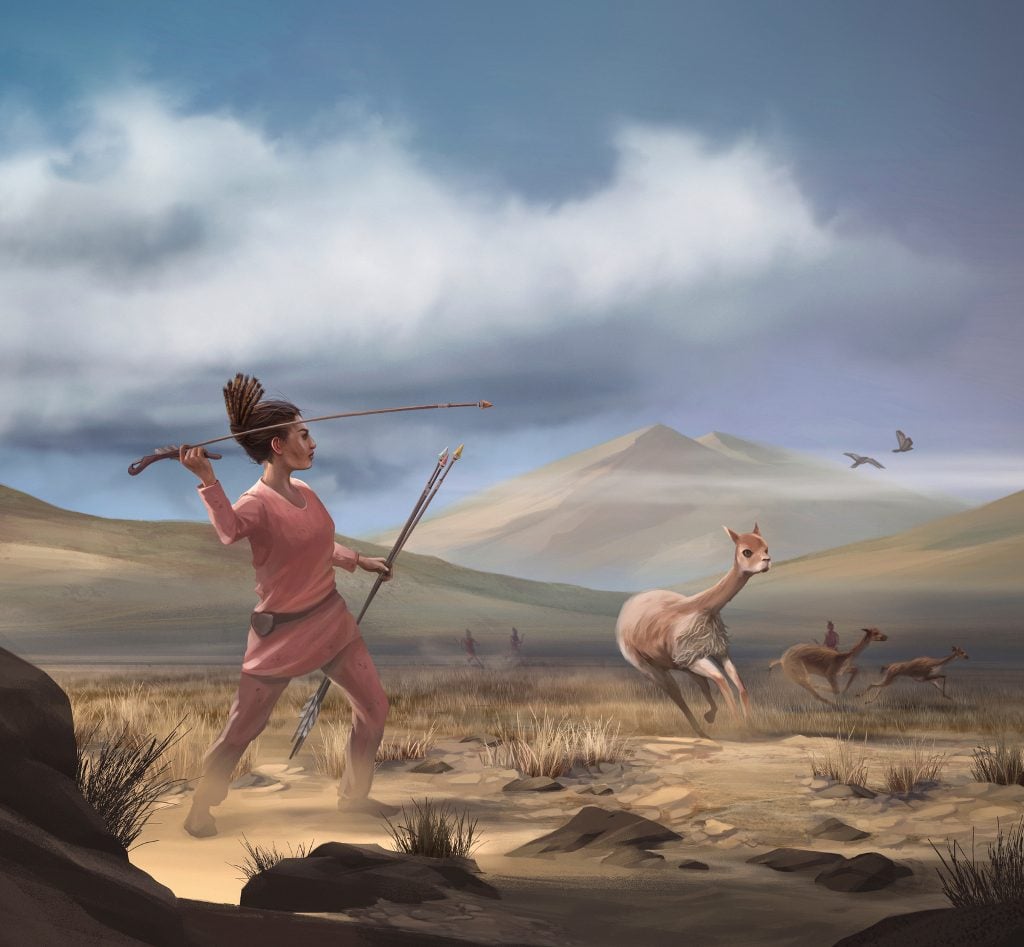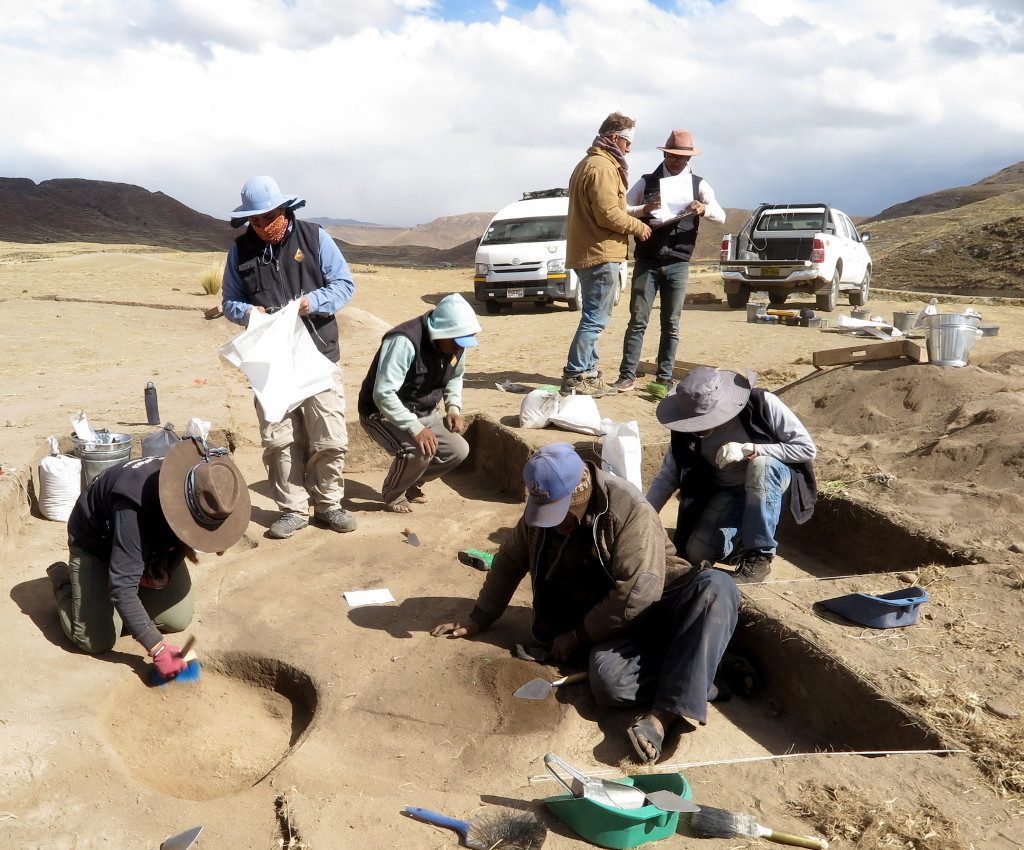Art World
The Most Ferocious Ancient Hunters May Have Been Women as Often as Men, a New Archaeological Find Suggests
Human female remains turned up accompanied by big-game hunting implements—and it wasn't the first time.

Human female remains turned up accompanied by big-game hunting implements—and it wasn't the first time.

Brian Boucher

If you were to conjure an image of an ancient hunter-gatherer society, you’d probably picture men as the hunters and women as the gatherers. But a 9,000-year-old burial site discovered recently in the Andean highlands of southern Peru has revealed that assumption is likely flawed.
A set of hunting tools uncovered at the side of a skeleton of a woman in her late teens is likely to shift our understanding of ancient gender roles. The discovery, by University of California, Davis anthropology professor Randall Haas and a team of experts, was published on Wednesday in the journal Science Advances.
The find furthers the theory that big-game hunting in early subsistence economies was an all-hands-on-deck enterprise, and that all adults may have shared responsibility for raising children, allowing able-bodied women to join the hunt.
The archeological site of Wilamaya Patjxa, where the dig was conducted, has turned up more than 20,000 artifacts and five human burial pits with six individuals, according to the paper. The new subject, who Haas and his colleagues are simply calling Wilamaya, was buried with such tools as projectile points for killing big game, a knife for field dressing, and scrapers and choppers used to extract bone marrow and process hides.

Excavations at Wilamaya Patjxa. Courtesy Randall Haas.
Could the combination of female remains and hunting implements be a one-off? To get a broader picture, Haas and company surveyed Late Pleistocene and Early Holocene burials in the Americas, which have yielded more than 400 human subjects. Of the 27 skeletons associated with big-game hunting tools, 11 are female (including Wilamaya).
While archaeologists have discovered hunting tools with women’s remains before, they’ve hesitated to conclude that the women were hunters, partly because of assumptions based on contemporary hunter-gatherer societies, but also because rodents or people sometimes move remains and artifacts around, so the fact that they were found together doesn’t necessarily mean they were interred together.
“What had to happen was feminist scholars telling us to be alert to other possibilities,” Haas told Artnet News, “and we had to have the right data come along.”
What made Wilmaya’s remains such a convincing case for a female hunter?
“The implements were neatly stacked in a small pile right near her hip,” Haas said, making it “unequivocal” that the artifacts were buried with her. And, he added, because of all those other remains found over time, “now we have enough cases that we can be fairly confident” that women were hunters much more frequently than previously thought.
Matthew Verdolivo (senior artist, UC Davis IET Academic Technology Services) created an artistic rendering of Wilmaya in consultation with Haas, Madeline Frey (UC Davis undergraduate student and artist), and Steve Dana (graphics lead, UC Davis IET Academic Technology Services). It is closely tied to archaeological evidence; her hairstyle, for example, is based on imagery found in rock art in the region.
Her clothing, too, is based on materials and artifacts she was buried with—though to contemporary eyes it might resemble a millennial work-from-home outfit.
“The color of her outfit reflects that her toolkit suggested tailored clothing production, and included some red ocher, a pigment that we know was often used in tanning animal hides, as well as some hide scrapers,” Haas said. “So we know she was wearing hide clothing, and that it was painted or tanned with this red ocher pigment. The ocher helps to make hides beautiful and to preserve and waterproof them.”
As for the hue, he added, “It’s not because we think girls wear pink.”